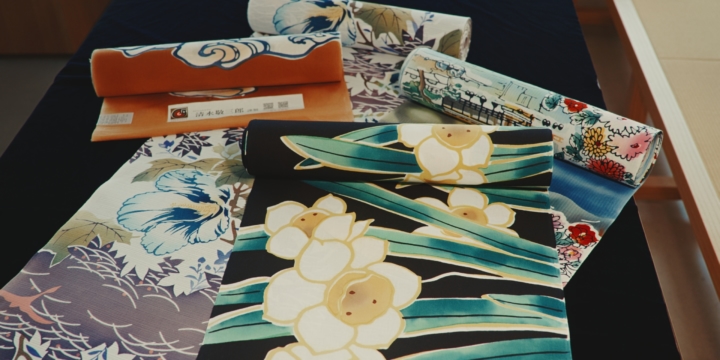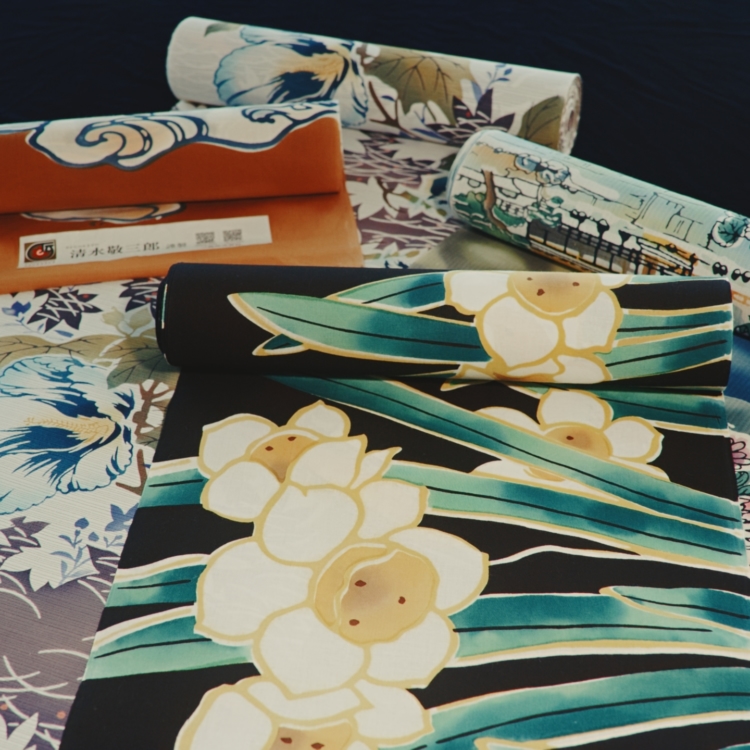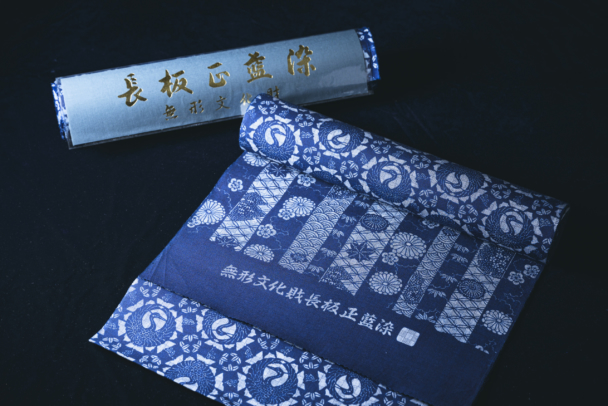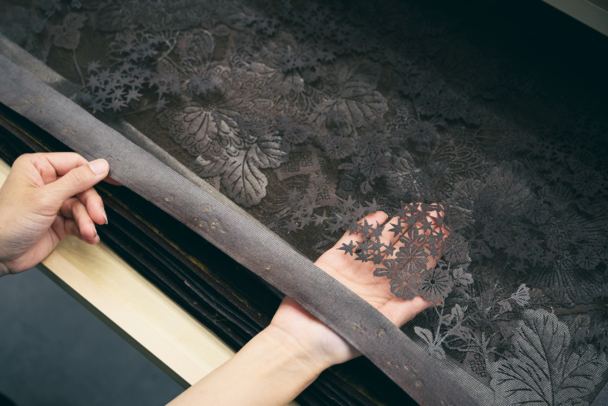

Passing On the Traditional Techniques of Yukata Artisans with a Modern Sensibility
Founded in 1894, Sankatsu has been producing yukata from the Meiji era to the present day. The company is based in Ningyocho, a district that escaped destruction during the Great Kanto Earthquake and World War II, and as a result, Sankatsu still holds a valuable archive of over 20,000 historical stencil patterns.
Sankatsu’s mainstay is chusen dyeing, a traditional method that differs from dyeing fabric piece by piece. Instead, folded fabric is stenciled and pasted with resist, then dyed using a special spouted kettle. In some designs, up to six different dyes are used to create subtle gradations of color, resulting in a rich, fully dyed pattern visible on both sides of the cloth.
Sankatsu also preserves the nagaita chugata (longboard stencil dyeing) technique, once practiced by in-house artisan Kotaro Shimizu. This intricate process involves placing matching stencils on both the front and back of a single sheet of fabric and dyeing both sides, a task that demands extraordinary precision and produces exquisitely delicate results. “A yukata should evoke coolness not only for the wearer, but also for those who see it. The key lies in how the white background is expressed.” These words from a past master remain close to the heart of fourth-generation head Hanshichi Amano, who is actively exploring the many possibilities of yukata—from creating modern styles using yukata fabric to developing interior design products.
In 2012, the company opened the Sankatsu Yukata Museum to help more people understand the history and craft of yukata, showcasing archival stencils and bolts of fabric previously kept in storage. Traditionally, Sankatsu has operated as a wholesaler, commissioning textile makers and dyers from across Japan and supplying finished products to department stores. Until recently, direct interaction with customers was rare. But through the museum, Sankatsu has taken an important step toward preserving traditional production regions and techniques, while sharing these efforts with a wider audience.
At the same museum in Ningyocho, exhibits explain the various dyeing techniques and also feature panels introducing Kotaro Shimizu (1897–1988), a nagaita chugata master later designated a Living National Treasure, and his son Keizaburo (1932–2021), known as a walking encyclopedia of yukata. Today, Hanshichi Amano continues to honor the traditions they left behind, while finding new ways to adapt yukata to contemporary lifestyles.



